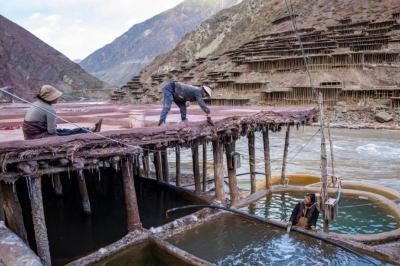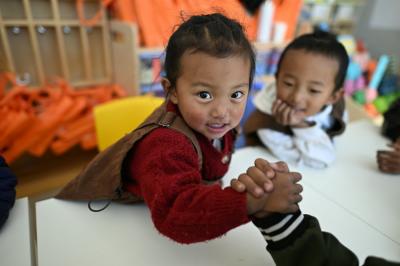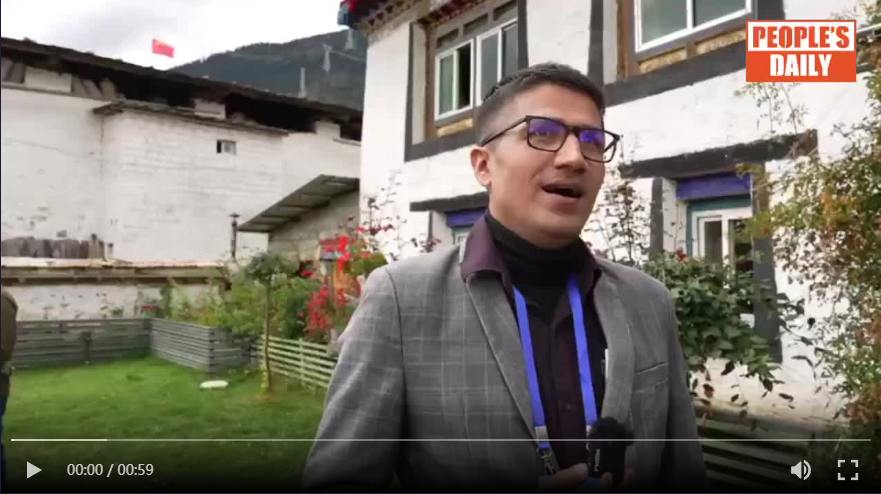| Sept.30,2019 -- In recent years, Lhasa has made great efforts to develop the pure land health industry, which not only promotes the rapid economic development of Lhasa, but also lays a solid foundation for guaranteeing and improving people's livelihood.
"Lhasa's non-public economy has grown from nothing to a big one. The market is growing faster and the market mechanism is more and more flexible. Lhasa has become a hot place for investment and development," says Liu Meiyan who has come to Lhasa by chance since 20 years ago. Seeing the business opportunity, she resolutely gives up her business in Guangdong and decides to invest in Lhasa. Now she is president of Tibet Rose Biotechnology Development Co., Ltd. in Dagze Industrial Park, and is committed to promoting Tibet's rose brand to the whole world.
The convenient and efficient highway network gradually becomes the main artery of Lhasa's economic and social development. The rural roads extending in urban and rural areas serve farmers and herdsmen and inject strong impetus into the economic take-off of agricultural and pastoral areas. "With convenient transportation, the eggs produced by our cooperative can be sold in time to the market in downtown Lhasa and at a good price," says Thubten, a villager from Tangkya Town of Maizhokunggar County in Lhasa City. He is full of confidence in the market prospect and plans to open an agritainment to invite more tourists to visit his hometown.
From the city center to the field, from the new education town to the industrial park, and from the infrastructure construction to the improvement of people's livelihood, Lhasa, the rising capital city, is full of vitality.
Huge leap in economic aggregate
On the surging development path of Lhasa, its economic aggregate has achieved a huge leap. As the best indicator of national or regional economic conditions, its GDP growth rate is even higher than the national average.
From the perspective of Tibet, in 2018, Tibet's GDP totaled 147.763 billion yuan RMB, an increase of 191 times over 1959's 174 million yuan RMB in comparable prices. From the perspective of Lhasa, in 2018, Lhasa is expected to achieve a regional GDP of 52.8 billion yuan RMB, a year-on-year increase of 10%, accounting for about 37% of Tibet's total GDP.
Today, Lhasa has established a modern industrial system covering more than 20 categories, including energy, building materials, machinery, mining, light industry, food processing, ethnic handicraft industry, Tibetan medicine and so on. Bidding farewell to the traditional mode of production, Lhasa gradually reaches the level of modernization.
On the basis of the "double-digit" growth of the GDP, in 2018, the revenue of the general public budget of Lhasa reached 11.01 billion yuan RMB, up 22.84%; the per capita disposable income of urban residents was 35,650 yuan RMB, up 10%; the per capita disposable income of farmers and herdsmen was 14,420 yuan RMB, up 11%. These figures show that the comprehensive economic strength of Lhasa has been continuously enhanced, and the people have benefited a lot.
Transformation and upgrading of resident consumption structure
On the surging development path of Lhasa, with the sustained and rapid economic development and steady increase in income, the consumption structure of the people is also undergoing transformation and upgrading.
In 2018, for example, the total retail sales of consumer goods in Lhasa reached 29.5 billion yuan RMB, an increase of 14%. The upgrading and transformation of the consumption structure played a significant role in promoting industrial development. The contribution rate of consumer expenditure to economic growth reached 36%, and the basic role of consumption in economic development was constantly strengthened.
In recent years, commercial complexes, specialized markets, featured commercial streets and other business clustershave gradually increased. Steady progress has been made in the establishment of e-commerce in rural demonstration counties (districts) in Chengguan, Dagze, Damxungand Doilungdeqen. Personalized and diversified consumption patterns, such as preferential terms of mobile payment, online discounts and so on, have gradually become the mainstream in Lhasa. New consumption points, such as tourism, culture, sports and health, continue to be popular.
Taking Princess Wencheng as an example, the large-scale live-action drama received 500,000 tourists in 2018 and earned 150 million yuan RMB at the box office. With tourism support and other income, the total revenue was nearly 200 million yuan RMB. A few days ago, Princess Jincheng also premiered. Now, all eight impoverished counties (districts) and 225 impoverished villagesin Lhasa have been lifted out of poverty, reducing the poverty rate to 0.27%, taking the lead in getting rid of poverty in Tibet.
Improvement of people's livelihood
On the surging development path of Lhasa, infrastructure is further improved; people's livelihood continues to improve; Qinghai-Tibet Railway, Lhasa-Xigaze Railway and Lhasa-Konggar Highway are open to traffic; the construction of urban comprehensive pipe gallery is completed.
In old Tibet, there were no regular highways. After the peaceful liberation of Tibet, the construction of modern highways in Tibet began. Under extremely difficult conditions, the state built Qinghai-Tibet Highway, Sichuan-Tibet Highway and other highways leading to various regions. At present, Lhasa has basically formed a comprehensive three-dimensional transportation network with roads, railways and aviation as the main body.
Before the peaceful liberation, Tibet had only one small hydropower station with 125 kilowatts, which could generate electricity intermittently for a small number of upper aristocrats.Under the care and support of the party and the government, the Nachen hydropower station was built in 1960 to generate electricity, and ordinary people in Lhasa used electric lights for the first time. Today, Nachen hydropower station is still praised by many old people in Lhasa. In fact, the improvement of people's livelihood driven by effective investment is becoming an important symbol of Lhasa's economic and social development in the new era. The completion of a series of livelihood projects brings Lhasa residents a real sense of gain.
Today, Lhasa is adhering to the people-centered development thought, implementing the new development concept, implementing high-quality development requirements, creating the "Lhasa model" of plateau border economic development, and enhancing the sense of gain, happiness and security of people of all ethnic groups through the vivid practice of building a united, beautiful, healthy and happy new Lhasa.
|
- Home
- News Tibet |Exclusive |China |World |Related News |Latest
- Documents White Papers |Others
- Photo Politics |Economy & Society |Culture & Religion |Human & Nature |Beautiful Tibet |Other Tibetan-Inhabited Area |Exchanges |Related
- Video News |Documentary |Micro-Video |Entertainment
- Art
- Tourism
- In Focus
- About Tibet






